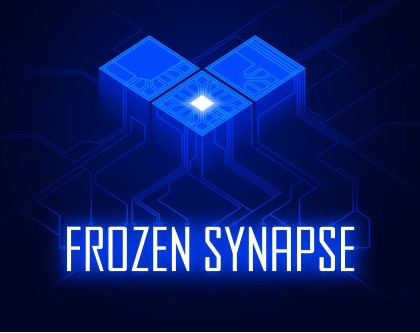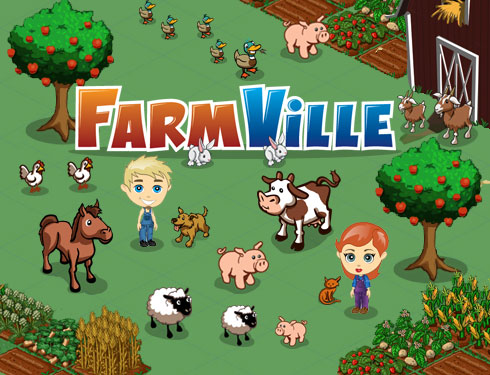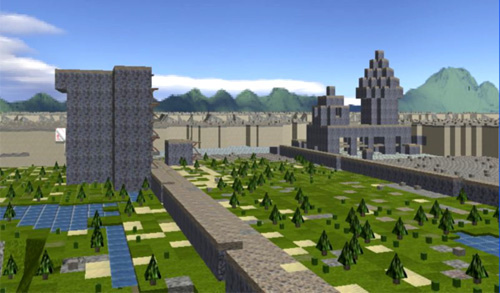原文:http://gamerboom.com/archives/26049
Mode 7是位于牛津的独立游戏工作室,其进展中的项目是极受人欢迎的多人和单人策略游戏《Frozen Synapse》,本作可在PC和Mac上运行。该工作室成员Paul Taylor在Games Brief上发表客座文章,以下是游戏邦编译的相关内容:
本文的目标群体是那些想要制作游戏的人,这正是我们在Mode 7对自己的定位。我们并没有成为下个Zynga或动视公司的抱负,只是想做小型但能够盈利的工作室。如果你认为自己的定位与我们相近,或者你希望通过制作 独立游戏维持生计,那么你可能发觉以下内容对自己有所帮助。在此,我并不想装作对行业相当熟悉,我还远未达到那种水平,我们也都是边做边学。
1、需要商业头脑
要通过独立游戏维持生计,首先你需要有商业思维。如果这种说法令你感到无所适从或者你对此不感兴趣,那么就需要马上找个有商业头脑、富有创造性且支 持相关项目的运营合作伙伴。你应该尝试成为或找到良好的商业会计,从Business Link之类的组织那里得到些许基础建议。开发者需要从艰难的商业操作中脱身,你的会计应该要帮你解决任何自己感到棘手的问题。
2、制定切实可行的销售目标
独立游戏能带来多少利润呢?到现在为止,鲜有独立游戏销售量能超过100万套。《Amnesia》所取得的成果较为合理,这款独立游戏的开发者已有 适当用户基础。游戏特色是接近AAA级游戏的图像设计,销售量近期上升至将近20万套。对其他独立游戏开发者而言,游戏的销售量能突破1万或2万便足以欢 呼雀跃。
因此,需要制定多少销售目标并没有确切的答案。坦诚来说,如果某个新开发者告诉我他的游戏只能运行于PC上,而且想要获得逾1万的销售量,我会为他的处境感到担忧。我认为对某个有抱负心的独立游戏而言,理想的项目时长在1.5至2年间,但这只是我的个人观点而已。
3、想法、美工和可玩性
平心而论,在游戏发布前,没人真正知道哪种游戏好卖。他们可以猜测,根据许多相关数据做出预测,但无法得到准确的答案。尽管如此,为了让你的游戏有可能成为令人满意的产品,我认为有几个要点需要注意:
想法
萌生好想法无规律可循,你需要预想哪些事物能够满足所有玩家或你认为能够产生作用的特定群体的诉求。
对于这个方面,我也无法直接提供什么建议,重点在于开发者要记住应考虑受众对你的想法会有何反应。我认为《Retro City Rampage》、《Farmville》、《Uplink》和《粘粘世界》这4款风格迥异的游戏很明显地传达出作者的想法,相对于我的连篇累牍来说,它 们能更清晰地阐明我的观点。只要你接触上述游戏,立时就可以清楚明白游戏中的内容以及玩游戏的乐趣所在,这正是想法所要达成的目标。
美工
如果想取得成功,那么你的独立游戏就必须在视觉上吸引人。每天都有大量给人带来视觉冲击的独立游戏浮现,看看Indiegames.com等网站的 报道就能知道这一点。玩家选择游戏是因为图像,而为游戏所吸引是因为可玩性,这二者你都需要。这里我说的并不是昂贵的AAA级游戏图像,我指的是那些能够 立即产生巨大视觉冲击的内容。《Dwarf Fortress》做到了这一点,其ASCII界面瞬时吸引用户关注。
你需要找到用极低成本制作闪亮新颖视觉效果的方法。这听起来不是很容易,但作为富有创造力的独立游戏开发者,这正是你发挥才能之处。 Lexaloffle(游戏邦注:某独立游戏公司。)以低成本但引人注目的方式重现被人所遗忘的图像技术,实现上述目标。这也是他们的游戏预告片已有20 万人观看的原因。
最后,有两样东西对你不无裨益:细节和趣味性。游戏在视觉上取得成效后,你可以回头添加各种内容,包括有趣的事物、小动画、诡异的细节、隐藏区域和菜单图像等。手工制成的小细节融合起来才能构筑精品,评论员和消费者会注意到你付出的辛劳。
可玩性
好的游戏设计人员会牢牢把握两种对立的技术:抽象规则系统和实际设计方法。如果你精通前者但感到后者甚为棘手,尽早让他人参与到游戏中,因为那时的 反馈信息能够有所帮助。“早发布随后经常修改并测试”的想法也正是因此而产生。需要提醒的是,对大部分玩家来说,如果没有像样的艺术(游戏邦注:这里的艺 术指上文提到的美工。)作为前提,他们几乎未曾考虑评价游戏的可玩性。
游戏设计是个需要花毕生精力来掌握的技能,这是个职业。和许多职业类似,很多人认为只要他们有机会从事,就会做得很棒,这些人的想法绝对是错误的。如果游戏的可玩性不足以让人们向朋友推荐你的游戏,你就无法获得使自己得以继续发展的资金,事实就是这样。
4、设计付费模式
在设计游戏时,考虑付费模式。这里我提些中肯的意见,就目前PC和Mac上的盈利而言,包含虚拟商品的免费游戏位居首位。它们允许钟爱游戏的消费者 花更多钱,也可以从其他渠道获得少量营收,比如玩家购买游戏的完整版。虽然事态如此,但此类方式营收最高并不意味着你必须采用这种方法,或许它并不适合你 想要制作的游戏。记住,我们是想要制作游戏的人。你制作游戏的原因在于创造,而不是想要尽可能多赚钱。
因此,传统的一次性付费对个人和小公司来说仍然是行之有效的方案。需要注意的是,如果你确实选择一次性付费方式,我建议你尽早关注扩展包和为真正喜 欢游戏的消费者提供更多价值的方式。有证据表明,一次性付费比免费更容易让玩家着迷,因而你可能获得某些想要得到更多内容的激情粉丝。
这种方式对消费者也更为友善,你无需不断叨扰人们让其付费,让你与消费者间的关系较为和善。要想知道如何让多数消费者长期沉浸在游戏中,看看Penny Arcade的做法。他们制作粉丝喜爱的产品,与玩家保持互惠关系。游戏邦认为,独立游戏公司也可以采取相同的方法。
5、提供预购服务并增加其价值
对独立开发者制作一次性付费游戏来说,实行预购是种非常有效的手段。当有人预购我们即将面世的游戏《Frozen Synapse》时,他们可立刻获得测试版和能提供给朋友的免费版。到目前为止,这种方法已经使我们获得一定的成功。在我们以这种方式发布游戏前,最重要 的事情便是等待直至测试版足够好玩并稍加润色。以上是我给考虑采用这种方式的开发者的建议。
我们决定不在发布预购版同时发布游戏样本,确保只有那些真正对我们的想法怀有热情并愿意投入时间的人才会得到测试版。虽然我认为这会限制预购群体的 数量,却也创造出能够显著改善游戏开发的极度狂热和支持性玩家群体。当游戏准备通过测试版接触更多受众时,上述做法可能将它提升至最佳状态。
我认为,如果你的作品像《Minecraft》那样容易让玩家接受,那么就没有在开发早期不出测试版的理由。和上述所有建议类似,你做出此等决定之前需要考虑是否适合自己的游戏。
6、考虑通过网络打击盗版
盗版是独立开发者面临的一个很现实的问题,这意味着某些网络内容(游戏邦注:这里作者指代需要用户购买后才能通过网络获得的游戏内容。)是你游戏的 必需品,为那些真正想要付费的消费者提供游戏的价值所在。当人们知道他们可以从其他地方免费获得完整版游戏时,只有那些好心人才会选择付费购买。
通过融入网络内容解决这个问题的方法多种多样,但我建议你采用取悦消费者而不是与消费者站在对立面的方式。别强迫游戏毫无目的地与你的服务器连接,找寻可增加价值的有趣网络内容。
7、兼顾直接销售和间接销售
为让某款PC上的可下载游戏取得令人满意的成就,你需要接触每个主销售渠道。获得销售渠道的技巧是什么呢?那就是制作一款流行的游戏并尽早发布其相 关信息。别只依靠分销商为你出售游戏,直接销售也可以赚很多钱。你需要如下内容作为支持:可靠的付费供应商(游戏邦注:作者推荐 Fastspring。);让用户可轻松获得游戏信息的清晰网站以及测试版下载和购买页面;花时间优化网站并逐渐更新;以产生流量为基础的市场计划;网站 无需过于华丽,简单有效即可。
8、市场
尽量在博客、视频或社交网络上多发布相关信息。以我的经验来看,造势与成功之间有直接的联系,吸引公众注意对你自己或他人都有益处。
9、时刻关注销售量
你必须在网站上设立优良的站点分析,这是我曾经得到过的最有用的销售建议。如若不然,你无从知晓游戏售出或滞销的原因。我强烈推荐使用Google Analytics,功能极为强大而且免费。
10、与其他独立开发者和社群配合
独立开发者逐渐开始协作,比如《Super Meat Boy》等交叉销售游戏或Cliffski的项目ShowMeTheGames.com。积极参与独立游戏社群对你的工作有益,但是别卷入暗战之中。
11、理智使用展会
别在展会上花过多的资金,我还从未见过有人付大笔资金参展后便马上得到丰厚的收获。尝试找到合法的方式,免费参加展会。但是,前往某些展会并与其他 人谈论你的游戏是必不可少的步骤,这种小机会或许能够带来真正有价值的巨大收获。如果你在英国,我建议你参加Gamecity,正是这个展会让我决定加入 游戏业。
12、做自己的事,永不放弃
坚持对独立开发者来说是最可贵的,你会在制作中犯错误,吸取教训重新上路。只有你真正喜欢这件事,才能够做成,这也是独立游戏在这个残酷世界中的亮点所在!(本文为游戏邦/gamerboom.com编译,转载请注明来源:游戏邦)
12 BUSINESS TIPS FOR INDIE GAME DEVELOPERS
This is a guest post from Paul Taylor of Mode 7, an indie development studio based in Oxford. Their current project is Frozen Synapse, a critically acclaimed multiplayer and single player squad-based tactical game for PC and Mac.
This post will be of most use to people in the “Anyone Who Wants to Make Games” category, which is where we at Mode 7 would place ourselves. We don’t have ambitions to be the next Zynga or Activision; we want to be small but profitable. If you find yourself in a similar position, or even if you’re a one-man-band developer trying to make a living from indie games, you may find the following helpful. I don’t pretend to have all the answers – far from it – we’re all learning as we go.
1. Business brain required
To make a living from indie games, you will have to start running your own business. If this idea scares you, or you find it uninteresting, then get yourself a commercially-minded but creatively-sympathetic business partner immediately. You should try and get hold of a good business accountant (hard to find!) and get some basic advice from organisations like Business Link. There is nothing about the basics of running a business which is remotely difficult: your accountant should be able to help you out with anything you don’t understand.
2. Have realistic sales targets
How much money can an indie game make? Well, we’ve now seen that a statistically insignificant percentage of indie games can sell over a million copies! More sanely, Amnesia, an indie game from a developer with an existing fanbase, which features graphics approaching AAA quality recently managed to sell nearly 200,000 units. Other indies are delighted when their games break 10k or 20k units.
So, this is a “how-long-is-a-piece-of-string” situation. But suffice it to say, if a new developer told me that his or her PC-only game required sales of over 10k units to break even, I would be concerned for them. I think the ideal project duration for an ambitious indie game is 1.5 – 2 years, but that’s just my personal opinion!
3. Concept, Aesthetic, Gameplay
Fundamentally, nobody really knows which games will sell well until they are launched. They can guess; with a lot of relevant data they can make ballpark predictions, but they can’t know. However, I think there are boxes to tick in order to allow your game a chance of being a decent product:
Concept
There’s no formula for coming up with a great concept; you’re trying to divine something that will appeal to a range of people, or a specific niche that you think is under-served.
Also, there’s almost no point giving direct advice about this, save that it’s important to bear in mind what people other than yourself will think about your concept. Here are four very different games that I believe have very strong concepts; they’ll illustrate my point better than another paragraph of my waffle: Retro City Rampage; Farmville; Uplink; World of Goo. As soon as you encounter each of those games, it’s very clear what’s going on and why you’re likely to have fun if you play them. That’s the goal of a concept.
Aesthetic
Your indie game must look spectacular to even be a mild success. Heaps of visually attractive indie games are coming out literally on a daily basis: just take a look at TIGsource or Indiegames.com or RockPaperShotgun to see what I mean. People will come for the graphics and stay for the gameplay; you need both. I’m not talking about expensive AAA graphics here; I mean something that has a massive visual impact instantly. Even Dwarf Fortress does this: its ASCII look is immediately intriguing.
You need to develop a way of creating a brilliant original look with very little cost. Not easy, but as an inventive indie, doing clever things is your job! Lexaloffle have done this by resurrecting a forgotten graphics technique in a low-fi but striking way… That’s why their trailer has 200k views already!
Finally, two things that will never, ever hurt you: detail and “spice”. Once your game is visually functional, go back and add stuff – funny things, little animations, quirky details, hidden areas, motion graphics for the menus. Polish is an accumulation of small, hand-crafted details: reviewers and customers will notice the effort you’ve put in.
Gameplay
Good game design involves both a strong grasp of abstract rule systems and a practical hands-on iterative approach: skills which are at opposite poles. If you’re good at the former but poor at the latter, get other people involved at the earliest possible time when feedback is useful. This is where the tried and tested “release early and often” concept comes in. One word of warning: most gamers find it almost impossible to evaluate gameplay without some decent art on top.
Game design is a skill that takes a lifetime to master: it’s a vocation. Like many vocations, a lot of people think they’d be great at it if they just had a chance to do it: these people are almost always wrong. If your gameplay isn’t good enough for people to recommend your game to their friends, you won’t sell enough copies to keep going: that’s a fact.
4. Make payment models part of your design process
Think of your payment model as part of your game design. Here’s some mild conjecture: free-to-play games incorporating virtual goods offer the highest possible ceiling in terms of revenue on PC and Mac right now. They allow customers who love the game to pay more than average, and they also capture small amounts of revenue from players at the other end of the scale, who otherwise might not buy a “full version” of the game. However, just because something has the highest ceiling does not mean that’s where you should aim: it may simply not be suitable for the type of game you want to make. Remember, we’re in the “Anyone Who Wants to Make a Game” category here; you’re doing this because you have something you want to create, not because you want to make the most money possible.
So, it’s important information that traditional “pay-once” titles are still very viable for individuals and small companies. One caveat: if you do go down the pay-once route, I would definitely urge you to look into DLC and ways of offering more value to customers who truly love your game. Pay-once arguably offers more opportunity for immersion and scope than free-to-play, so you may well gain some very passionate fans who would love to get hold of more content.
It’s also more customer-friendly: you don’t have to keep badgering people to give you money every five seconds. That could lead to a more meaningful relationship with your customers. For a good example of how to make the most of long-term customer commitments in gaming, look at Penny Arcade. They make products (and hold events) that their fans love; they have a truly mutually beneficial relationship with their community. There’s no reason that an indie games company couldn’t adopt the same approach.
5. Offer pre-orders – and add value to them
Pre-orders are a very strong route for indie developers making pay-once games. When someone pre-orders our forthcoming title Frozen Synapse, they immediately get a copy of the beta as well as a free copy for a friend; this has had a reasonable degree of success for us so far. The most important thing we did was to wait until the beta was exciting to play and fairly polished before we released it in this way: I’d urge anyone considering this to do the same.
We decided not to put out a demo with the pre-order, ensuring that only those who were excited by the concept enough to invest made it in to the beta. While I believe that this has restricted the size of our pre-order community, it has also created an extremely passionate and supportive group who have helped us out significantly with development. When the game is ready to reach a wider audience through a demo, it will be in the best possible shape because of this decision.
I think, though, that if you have an alpha with the ease-of-use and accessibility of something like Minecraft there is simply no excuse for failing to have a demo at an early stage. Like everything, you should make this decision based on what suits your game.
6. Consider online to beat piracy
Piracy is a very real issue for indie developers: it effectively means that your game needs some kind of online component in order to offer value to customers who do want to pay. Only very good-natured people will buy something they know they can get for free elsewhere with no negative consequences.
There are many ways of solving this problem by incorporating online components, but I’d urge you to do that in a way which is pro-customer rather than anti-customer. Don’t just force the game to contact your server for no reason: think of an interesting online feature which can add value.
7. Go direct, and go indirect
To have a decent success on the PC with a downloadable game, you’ll need to be on every major portal. The secret of getting on portals? Make a popular game and release information about it early! Don’t just rely on distributors to sell your game for you, though: there is still significant money to be made from direct sales. You’ll need the following: A reliable payment provider (we recommend Fastspring); A clear website which allows easy access to information about your game, a demo download and a buy page; Time spent on optimising your website and tuning it for conversions; A marketing plan based on generating traffic; Your website doesn’t have to be flashy or even particularly attractive (providing your game itself looks good); it just has to be simple and work.
8. Market, market, market
The only thing I want to add to this now is that it never seems to be possible to over-do it on the blogging, videos or social network front. Loudness seems to correlate directly with success in my experience: be as attention-seeking as possible without harming yourself or others!
9. Know your numbers
You must have a good web analytics package on your website: this is the single most useful piece of marketing advice anyone has ever given me. Without this, you won’t know why your game is selling or not selling. Google Analytics is immensely powerful and free: I highly recommend it.
10. Work with other indies, and the indie community
Increasingly, indie developers are banding together and collaborating. Look at some of the cross-marketing in games like Super Meat Boy, or projects like Cliffski’s ShowMeTheGames.com. Getting actively involved with the indie games community can really benefit your work: just don’t get distracted by the posturing and in-fighting.
11. Use events wisely
Don’t spend much money on events: I’ve yet to find anyone who can demonstrate a clear return from paying for a big stand at a show or similar. Definitely try and find legal ways of going to events for free! In any case, do go to some events and talk to a lot of people about your games: there is always a small-but-not-insignificant chance of making a really valuable contact. If you’re in the UK (or even if you’re not) I urge you to support Gamecity – it’s an event which sums up why I want to be part of the games industry.
12. Do it, and don’t ever give up
Persistence is the most important trait you’ll need as an indie developer. You’ll need to make mistakes, learn from them and carry on anyway. You have to love doing this in order to do it at all: that’s why the indie games scene is one of the best places to be in this cruel world! (Source: Games Brief)




